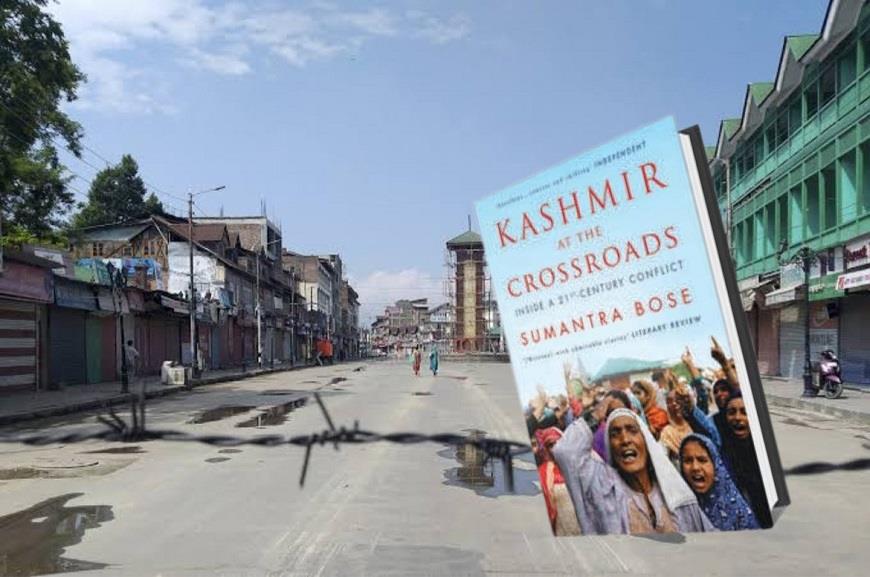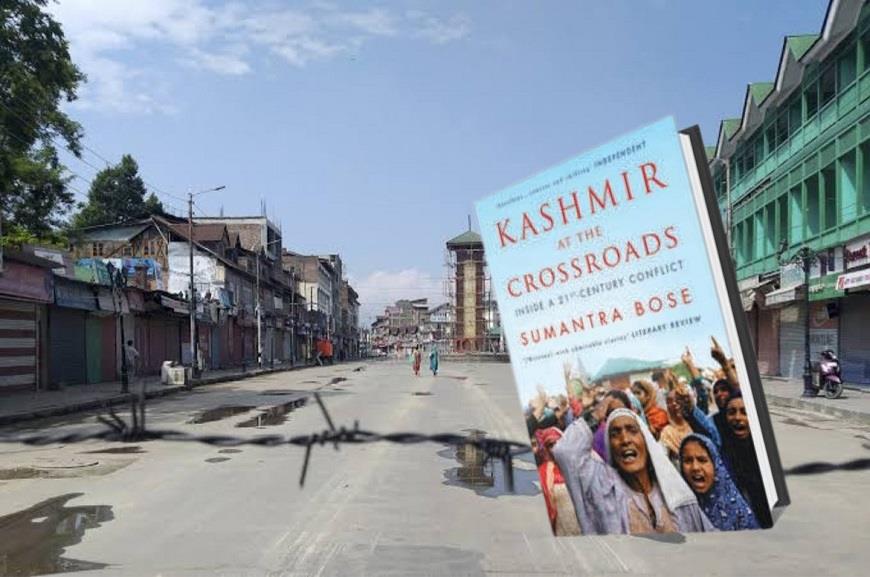
Kashmir After August 2019

In 'Kashmir at Crossroads', Sumantra Bose chronicles the situation in J&K following the abrogation of Article 370
WHEN Sumantra Bose first visited Kashmir as an adult in 1994 to learn about the conflict in the region as part of his studies at Columbia University, Kashmir was in the throes of an all-out separatist struggle. On average, ten people would die every day in militancy-related incidents. Massacres were not infrequent. Traveling through the region was hazardous. One could run into a cross-fire, bomb explosion or grenade attack, which have since killed thousands of innocent civilians. One could also rest assured of being stopped at security checkpoints every ten kilometers and frisked. Or worse, being put through an identification parade before an informant, a practice perfected in the then ubiquitous military crackdowns across the Valley.
This didn't deter Bose. He spent weeks in the Valley to make sense of the situation as it existed on the ground. This resulted in his first book on the region, The Challenge in Kashmir. The book endures as an authoritative account of the nineties' Kashmir. Ever since, the author has made regular visits to the region to follow the evolving situation and bear an impartial witness to it in his books. It is thus only appropriate that the first book to appear about the situation in the Valley since the erasure of J&K's autonomy on August 5, 2019, be his.
In 'Kashmir at Crossroads', Bose records the evolving situation in Kashmir after the abrogation of Article 370 that granted J&K its semi-autonomous status within the Indian Union. Although much of the book may sound familiar to the local journalists who have witnessed and covered Kashmir in the last two and a half years, Bose's is by far the most objective account of the situation in the region. That said, some narratives about the BJP's Article 370 move that have gained wide currency over the last two years have been more or less uncritically reproduced in the book. One such narrative is that the revocation of Article 370 was the outcome of the BJP's push to fulfill its long-standing ideological agenda and electoral promise. It certainly is that but now largely in a rhetorical sense. More than an ideological goal, the withdrawal has turned out to be a part of an alternative settlement formula for Kashmir, one which does away with Pakistan as a party to the issue. What is more, so far the plan seems to be succeeding, with New Delhi largely crushing the separatist struggle within the Valley.
As for Pakistan, Bose traces its inaction following India's Kashmir move to the country's lack of options. Both war and escalation of sub-conventional warfare in Kashmir are said to be the non-options for Pakistan as they are fraught with risks.
The prevailing situation in Kashmir confirms Bose's assessment. The last two years, as the police data reveals, have witnessed a drastic reduction in the influx of foreign militants even while over 500 militants have been slain by security forces since August 5, 2019, almost all of them Kashmiris. Pakistan has also reinstated the 2003 ceasefire along the Line of Control when normally the country, many observers argue, was expected to take advantage of Chinese incursions in Ladakh and increase ceasefire violations.. Is FATF a constraining factor? And also the country's beleaguered economy? What about its unhelpful geopolitical position? There's a ring of truth to this, but that doesn't account for another widely circulated theory that Pakistan assisted the Taliban in driving out the US, still the world's sole superpower, whose ally it ironically was and from whom it received funds to fight the very Taliban.
Where do we go from here? As always, Kashmir is too volatile a place to predict what comes next. The protean nature of armed violence and civilian uprisings often sneak up on us unawares. And as rightly pointed out by Bose, an incendiary escalation of the conflict could be triggered by one or some combination of three eventualities:“Major insurgent strikes in Indian Jammu and Kashmir, large-scale deaths from Indian action against renewed protests in the Kashmir Valley or a mass-casualty terror attacks in India”.
But for now, New Delhi has managed the situation well. Despite persisting militancy, violence has been marginal to the scene. The civilian protests have all but disappeared. But as any long-time Kashmir observer would tell you, this hardly is a guarantee that the situation would remain unchanged. Or who knows, Kashmir may surprise us by not veering off drastically from its current course.
- Views expressed in the article are the author's own and do not necessarily represent the editorial stance of Kashmir Observer
Follow this link to join our WhatsApp group : Join Now

Legal Disclaimer:
MENAFN provides the information “as is” without warranty of any kind. We do not accept any responsibility or liability for the accuracy, content, images, videos, licenses, completeness, legality, or reliability of the information contained in this article. If you have any complaints or copyright issues related to this article, kindly contact the provider above.
Most popular stories
Market Research

- Manuka Honey Market Report 2024, Industry Growth, Size, Share, Top Compan...
- Modular Kitchen Market 2024, Industry Growth, Share, Size, Key Players An...
- Acrylamide Production Cost Analysis Report: A Comprehensive Assessment Of...
- Fish Sauce Market 2024, Industry Trends, Growth, Demand And Analysis Repo...
- Australia Foreign Exchange Market Size, Growth, Industry Demand And Forec...
- Cold Pressed Oil Market Trends 2024, Leading Companies Share, Size And Fo...
- Pasta Sauce Market 2024, Industry Growth, Share, Size, Key Players Analys...





















Comments
No comment